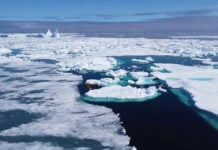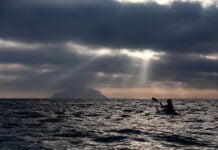When Nicolas Roulx and Guillaume Moreau paddled south from the remote hamlet of Baker Lake, they were already three months and more than 2,000 kilometers into an unprecedented north-to-south crossing of Canada, and they thought the worst was behind them. They’d survived -45°C Arctic temperatures, polar bear encounters and 12-hour days hauling 350-pound sleds through sea ice pressure ridges.
Yet, the ferocious winds on the massive lakes of Nunavut during the canoeing section of the trip were almost their undoing. The paddlers were stormbound in their tent for eight of the first 15 days and, with another 1,000 kilometers to traverse before their next resupply, their food rations were quickly dwindling.
“Even with the best preparation, you can never be ready for everything. This expedition could have been doomed many times,” says Roulx via phone after the trip. In fact, he adds, almost nothing about this gargantuan mission went according to plan.
Instead, adaptability was the most critical skill for Expedition AKOR, a never-before-attempted, seven-month-long crossing of Canada on a north-to-south axis. The journey was comprised of three expeditions within one mega-journey: a 1,450-kilometer ski across the Arctic, a 2,000-kilometer canoe trip through the tundra of Nunavut, and finally, a 4,150-kilometer bike ride to the most southern point in Canada. In total, the route spanned just under one-fifth of the circumference of the Earth. Here’s how they did it.
Expedition AKOR completes epic cross-Canada trip
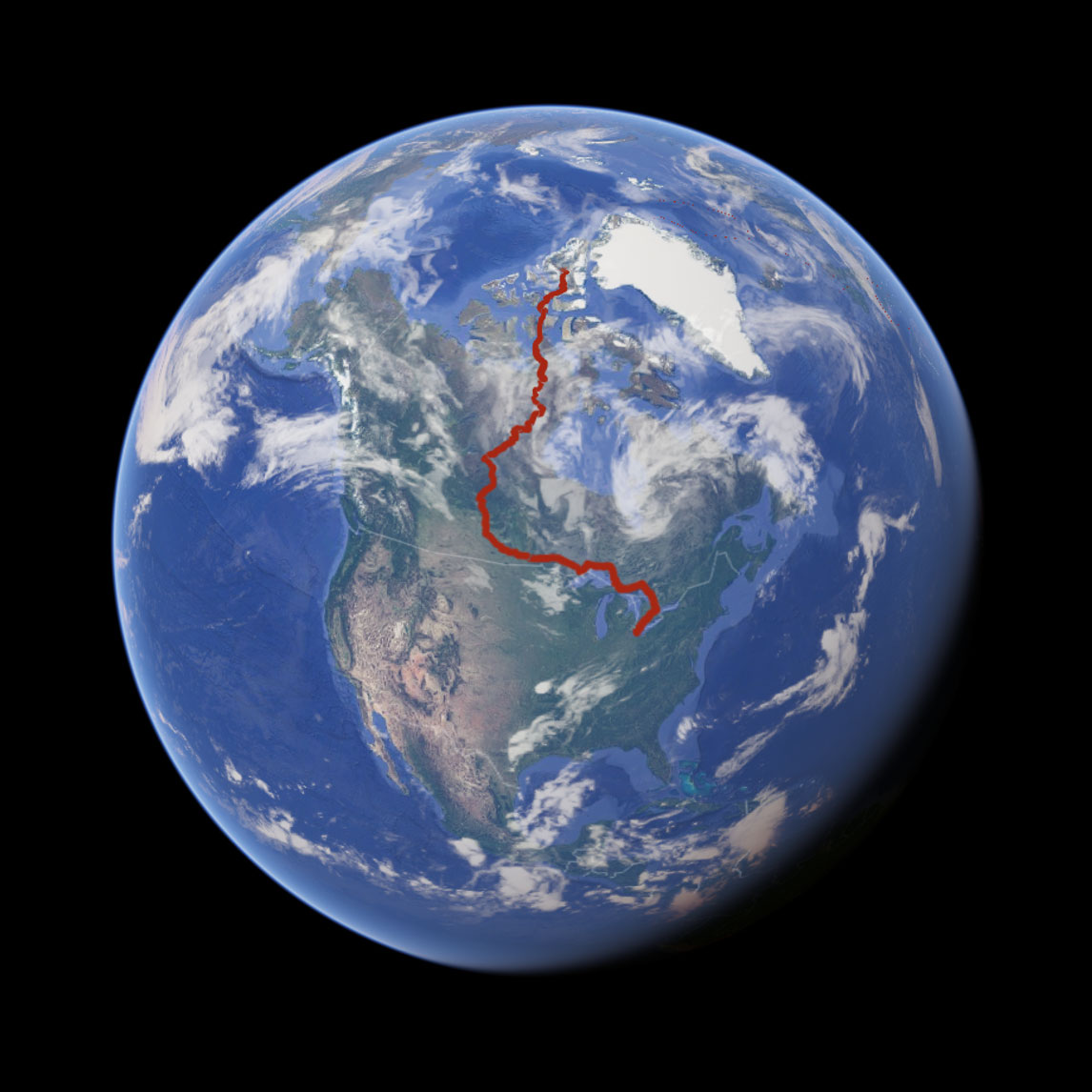
Back to the beginning
Canada is regularly crisscrossed east-to-west by cyclists and canoeists, but no one had attempted to cross the length of Canada on a north-south axis under human power. The route is mostly wilderness and requires a lengthy time commitment, as well as the skills and gear to span the conditions from the Arctic Cordillera to Carolinian forest. Plus, Arctic logistics are wickedly expensive.
The seed for this north-to-south crossing was planted at the end of a 2018 canoe trip in the eastern province of Labrador. That trip ended in the small coastal community of Nain, where local kayaker Noah Noggasak off-handedly shared a route with Roulx and Moreau, a route that hadn’t been done before.
“It was a very casual conversation; he didn’t know the information would change our lives,” says Roulx.
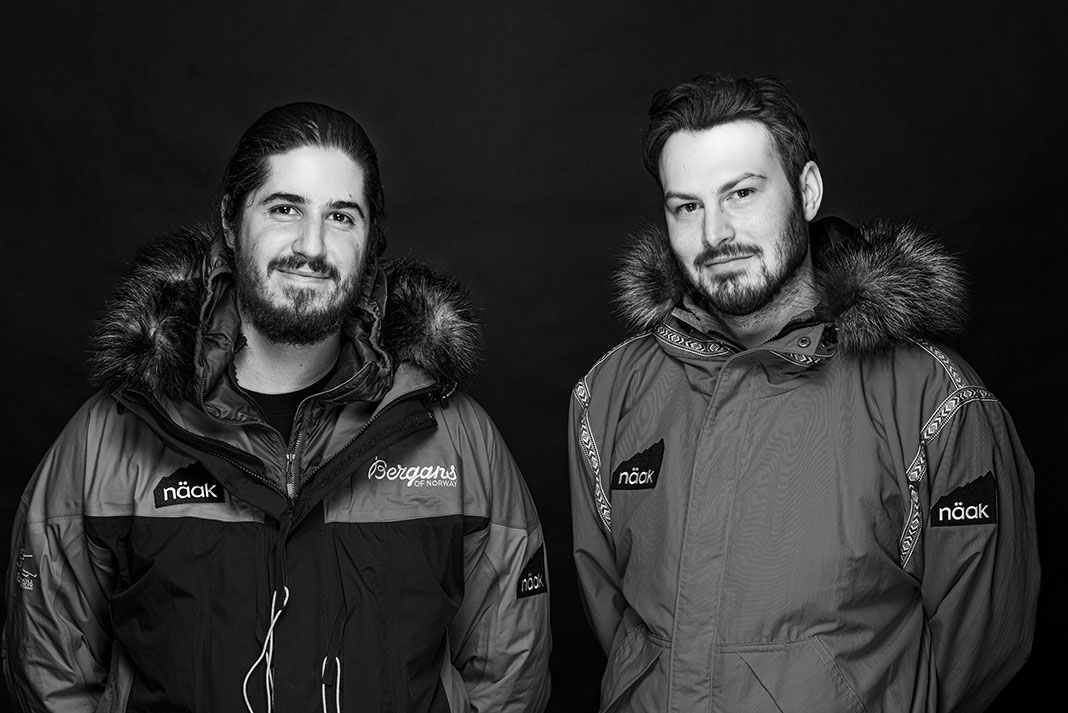
Upon returning home, Roulx and Moreau—who met at a Quebec canoe camp as teenagers—immediately started mapping a route that played to their strengths as wilderness canoeists instead of kayakers. They spent the next two-and-a-half years preparing, training, gathering sponsorships, and partnering with research projects. They also launched a successful crowdfunding campaign.
“Our expedition budget was more than $300,000. While many of my friends are saving to buy houses, I put all my money into expeditions,” says Roulx, 28. By day, he’s a high school geography teacher, while Moreau holds a Ph.D. in forest sciences and teaches at Laval University. More than half their budget went just to Arctic logistics, with the rest covering gear, food and skills courses, including wilderness first aid and ice rescue training.
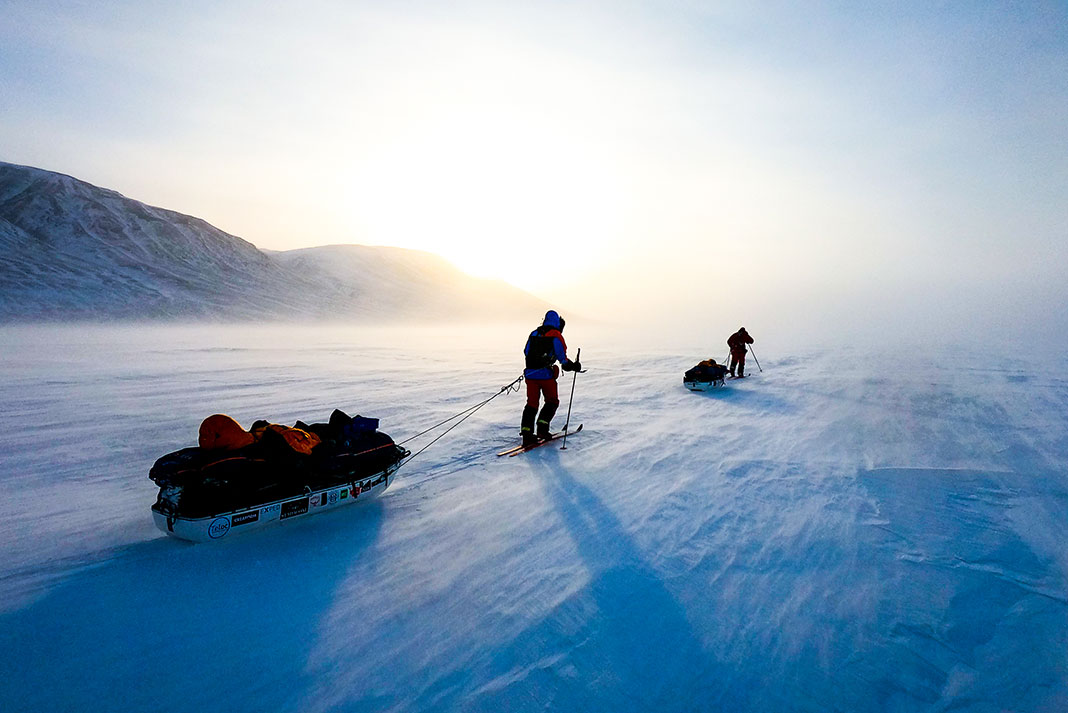
Across a frozen sea
On March 19, 2021, Roulx and Moreau, along with polar adventurer and friend Jacob Racine, departed from Ellesmere Island’s Eureka Weather Station, Canada’s second-most northernly settlement. The temperature hovered around -35°C and their sleds weighed 350 pounds, laden with supplies for the 800-kilometer ski to Resolute, their first resupply point.
“The skiing portion was the hardest thing we’ve done in our lives,” says Roulx. In addition to the frigid conditions, they faced 85 kilometer-an-hour windstorms and navigated massive compression ridges, like a labyrinth made of blocks of sea ice the size of hills.
The first polar bear came into camp three weeks into the trip, loitering a mere 10 meters from the tent. That was the first of several nights spent on watch. On another night, four bears were in view of the tent. The team had two bear fences, bear bangers and a 12-gauge shotgun as a last resort.
“It’s always a scary moment when you see a polar bear. You never know when you might come across a skinny bear with nothing to lose,” says Roulx. “Polar bears can be discouraged, but they’re not scared. When you look in their eyes, they’re very intelligent. They’re thinking strategy.”
When the trio limped into Resolute Bay, 40 days after setting out, they were in rough shape and suffering painful polar rashes. Moreau had injured his knees and was in agony while skiing. Each man had lost between 13 to 17 pounds, even while eating 8,000 calories a day. They had covered just 800 kilometers, less than a tenth of the expedition’s total distance.
“We arrived intensely physically broken and took two weeks to rest. It was like, ‘Welcome to polar expeditions.’ If you want to get somewhere in the Arctic, you have to work hard,” says Roulx.
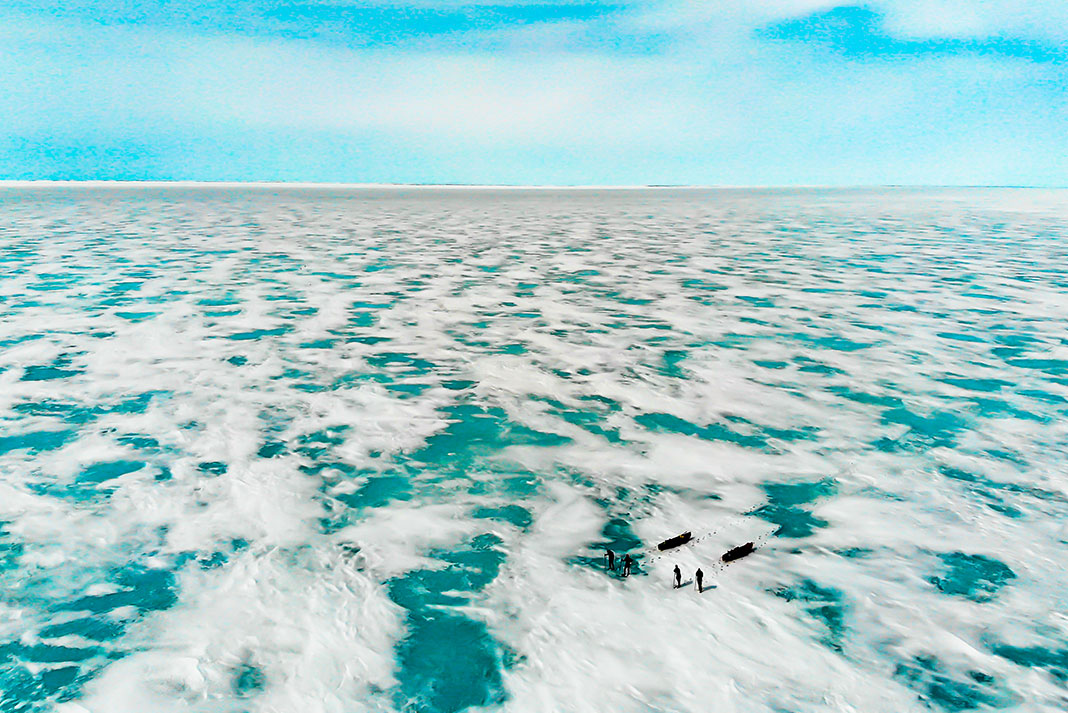
Bring on the blades
The second leg of the skiing journey offered flatter and faster conditions. Spring warmed temperatures up to -5°C, and the trio could sometimes ski in T-shirts. They often traveled more than 25 kilometers a day and reached Gjoa Haven on King William Island in 24 days. Two used Esquif Prospector canoes were waiting for them.
Racine left the expedition in Gjoa Haven as planned, and two canoeists, Philippe Voghel-Robert and Etienne Desbois, joined Moreau and Roulx. The original plan was to paddle upstream on the legendary Back River, but when the team analyzed satellite data they saw huge white sheets of ice on the river, which meant it was still breaking up.
Instead, the team rerouted onto a smaller network of rivers to the west. They packed their canoes with supplies and started out dragging the heavy boats across the frozen sea towards open water, a technique they used on previous expeditions with the same canoe model. However, they soon discovered the ice was destroying their hulls.
“We found a big hole in the plastic,” says Roulx. “The hole happened in the first 10 days of a 90-day expedition. So, we had to treat the canoes like cedar canoes from then on.” The team blamed the delaminating and cracking hulls of the used boats on poor storage the previous winter. Near daily repairs required a lot of problem solving—Desbois’ rubber boots were even cannibalized in a repair job.
On land, the crew often came across archeological sites from Thule and Inuit, including artifacts, inukshuks, old tent rings and a kayak stand. “Those were a privilege to witness,” says Roulx. “People have been there for 8,000 years. There was nothing to explore geographically; the trip was about exploring our own limits.”
Six hundred kilometers later, the team reached Baker Lake on schedule. Once there, they were stunned by Voghel-Robert’s announcement he was dropping out of the expedition. Roulx says this was due to “interpersonal conflict,” declining to elaborate. Moreau’s girlfriend, Caroline Chagnon, dropped everything to fly to Nunavut for six weeks of paddling so the expedition could continue.
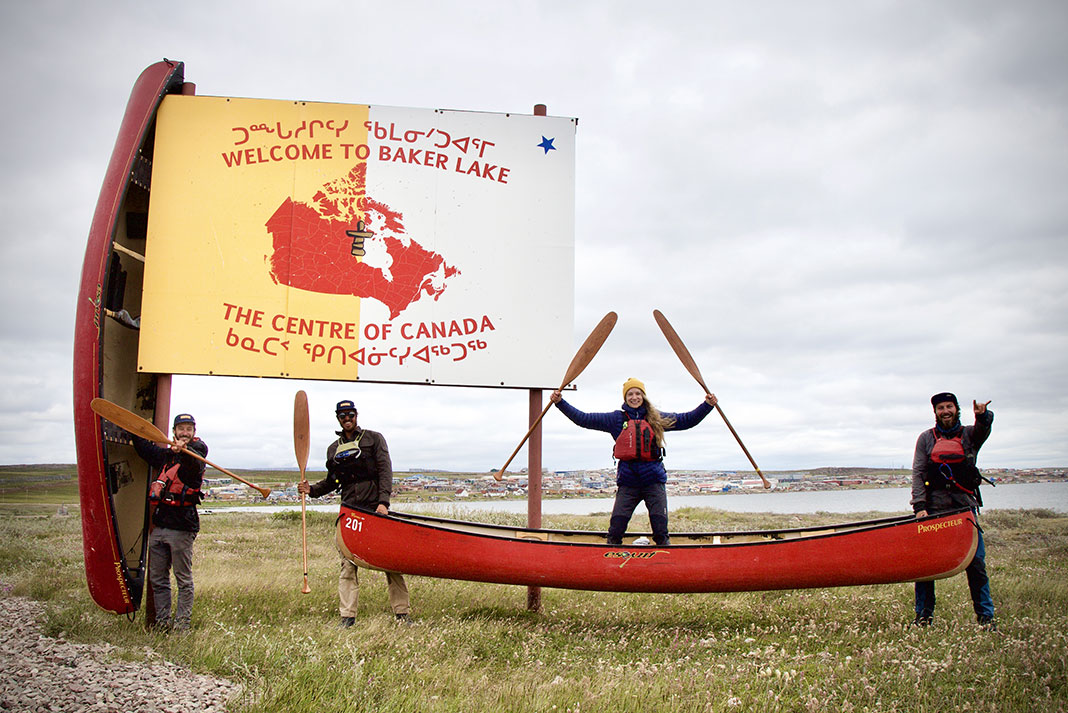
“Almost catastrophic”
Leaving Baker Lake, the next 1,000-kilometer leg to the Saskatchewan border was unexpectedly one of the toughest. That’s where raging winds kept the crew windbound for eight of the first 15 days, slowing progress to a crawl. Underestimating the wind on these massive lakes required the team to improvise a resupply with the only outfitter within hundreds of kilometers and reroute again.
“We thrive on problem solving,” says Roulx. “But on a seven-plus month expedition, you think, ‘Why can this not be simpler? There’s always someone injured, something breaking or wrong with the route.’ We were sick of it. Polar bears are stressful; being chased by a muskox is stressful; repairing the canoe every day is stressful. You wonder if you might have to abandon the canoes and finish the trip on foot, like a 19th-century explorer.”
“Before the trip, I knew there would be a time when I would be exhausted, and the moment occurred in this section,” he adds. “I felt like I was born on this expedition, and I would die on this expedition. It was endless.”
This fourth leg of the journey took an extra two weeks. When the paddlers reached the dusty dirt road on the shore of Wollaston Lake in northern Saskatchewan, they’d been paddling hard for 90 days. It was mid-September, and the days were growing short.
Paddle to pedal power
The team next hopped on bikes and pedaled towards Point Pelee National Park in Ontario, the southernmost point in Canada. Two more friends joined, and the risks of the journey changed: the team could eat their fill at roadside convenience stores, but unpredictable trucks were a constant danger. Though this was the longest stretch of their journey by distance—4,150 kilometers—the crew completed it in just 44 days, pedaling quickly to stay ahead of winter.
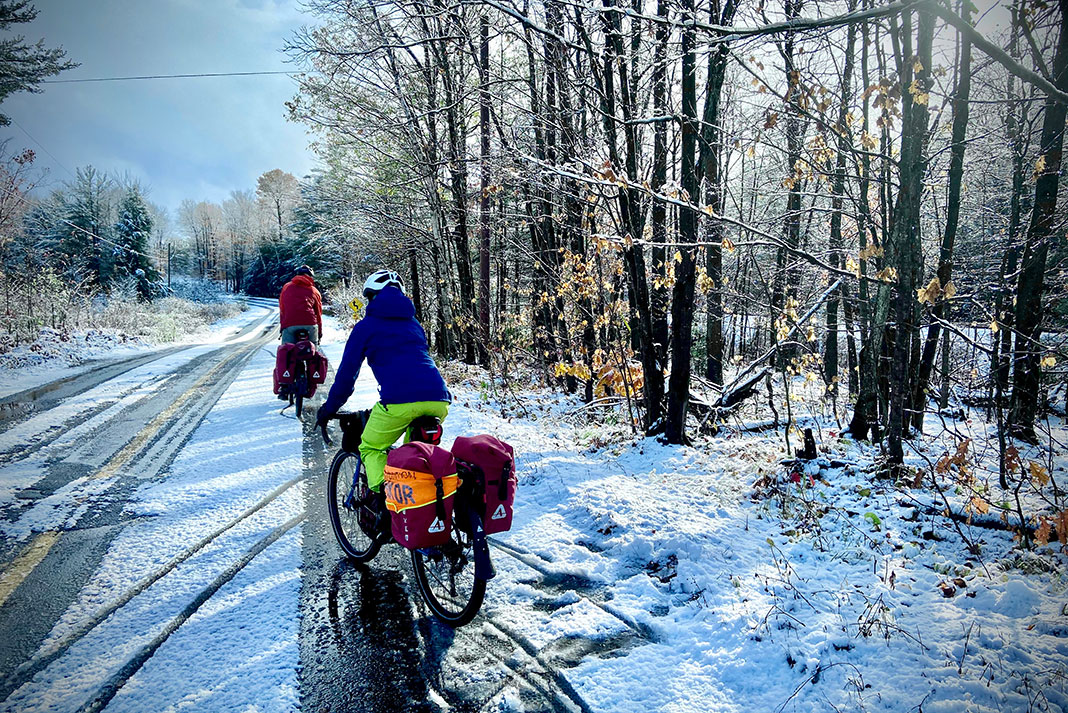
After managing the risks of polar bears, Arctic sea ice and windy, wild rivers, the expedition ended somewhat anticlimactically on the sandy shores of a calm Lake Erie on November 8. It was Day 234, almost eight months after Moreau and Roulx had set out.
“We started on Ellesmere Island and ended exactly where we wanted. For months we thought about the final destination, but when we got there, we wondered what’s next?” says Roulx. “We had so much fun developing our skills and being happy on the land, and then it’s over. We do these trips for the challenge and experience, not the glory.”
Of course, the ambitious expedition has garnered attention. Expedition AKOR earned the Royal Canadian Geographical Society’s 2021 Expedition of the Year award. While the journey has set a new standard for land crossings in Canada, the AKOR team is modest, insisting there’s nothing to be conquered or explored except ourselves.
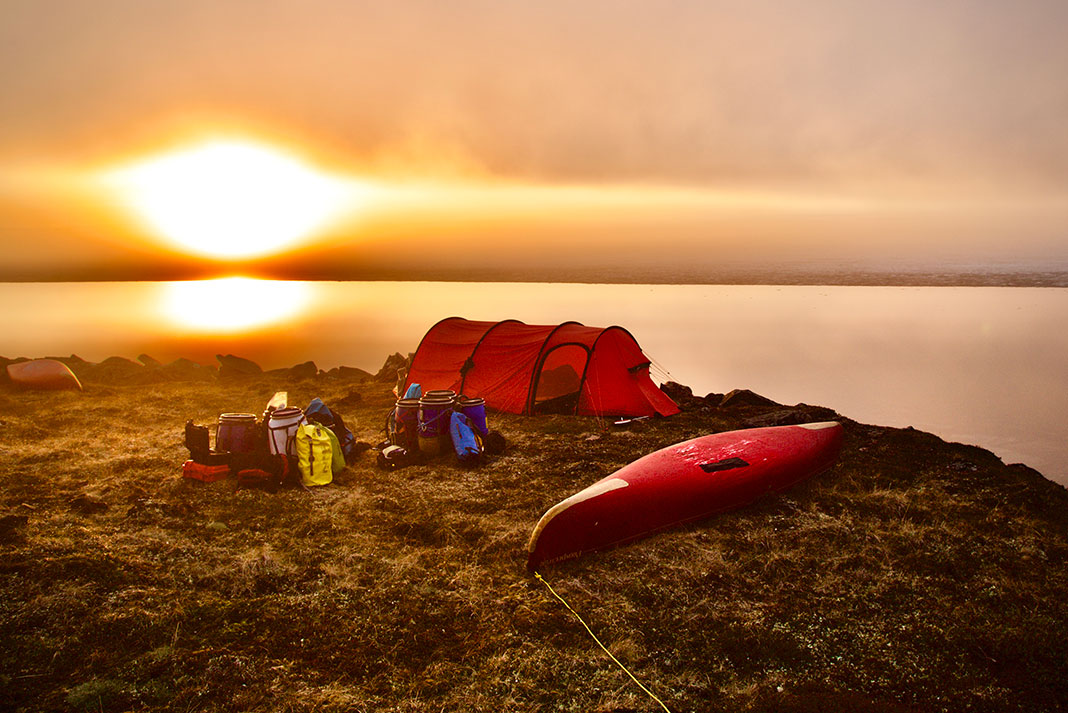
“We had a huge experience with vulnerability. Nature has the last word on if you’re going to paddle today or if you’re going to stay in the tent. We weren’t even at the top of the food chain,” says Roulx. “Traveling the land is a big lesson in being humble. And in patience. It would really take a lot now to make me say, ‘Oh man, we’re in deep trouble.’ Now, everything is manageable.”
Roulx has had ample opportunity to test this philosophy. After returning home, he caught COVID then broke his femur. He’s currently writing a book about the expedition, doing physio, and he and Moreau are dreaming up their next Arctic adventure.
“During the journey, almost nothing went as planned. We had to change our route many times, we were seriously injured, we had to ration our food, and we even had to manage the departure of a crew member and his replacement. Even with the best preparation, we can never be ready for everything. What we must rely on is our mental flexibility and our ability to adapt,” says expedition team member Nicholas Roulx. | Feature photo: Expedition AKOR



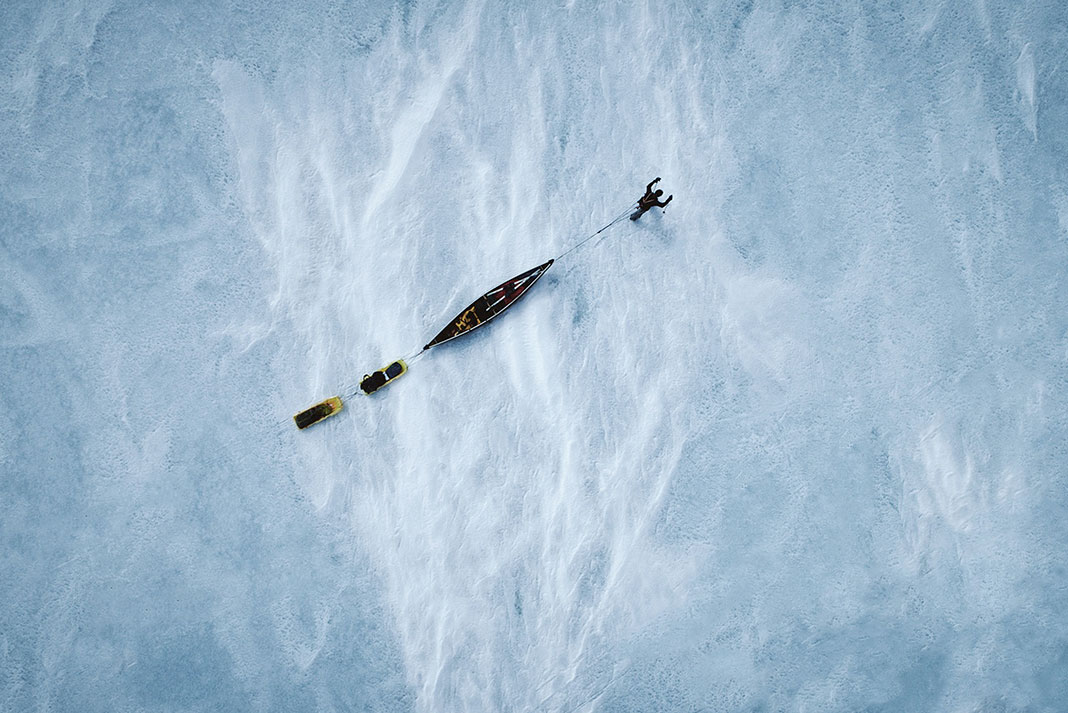
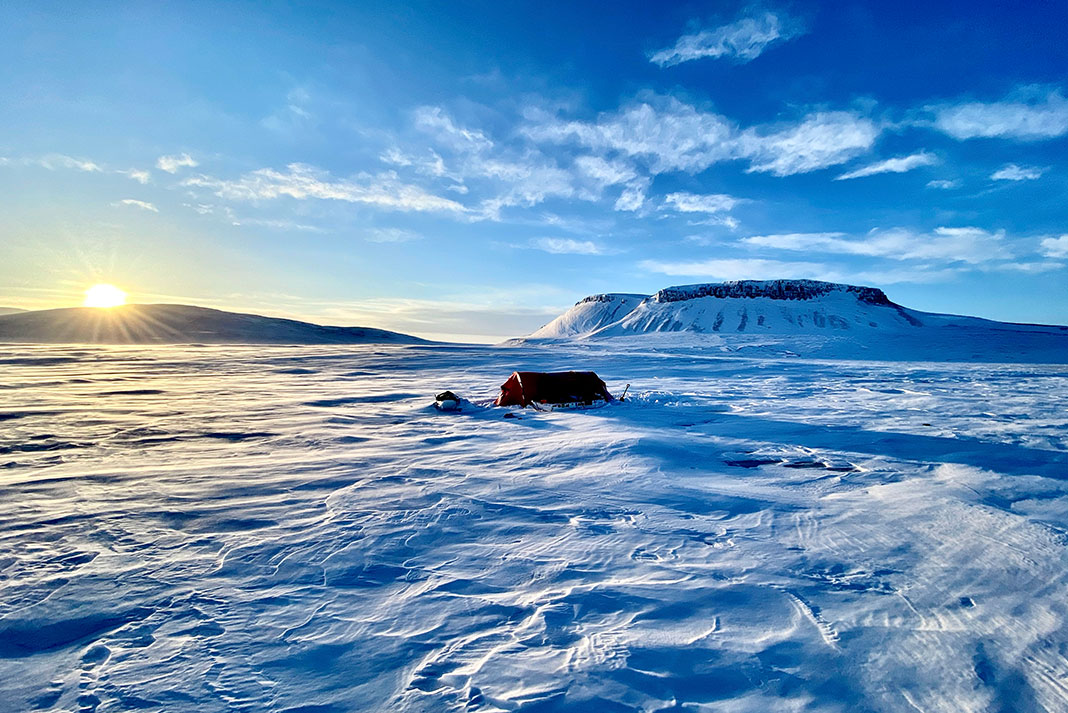
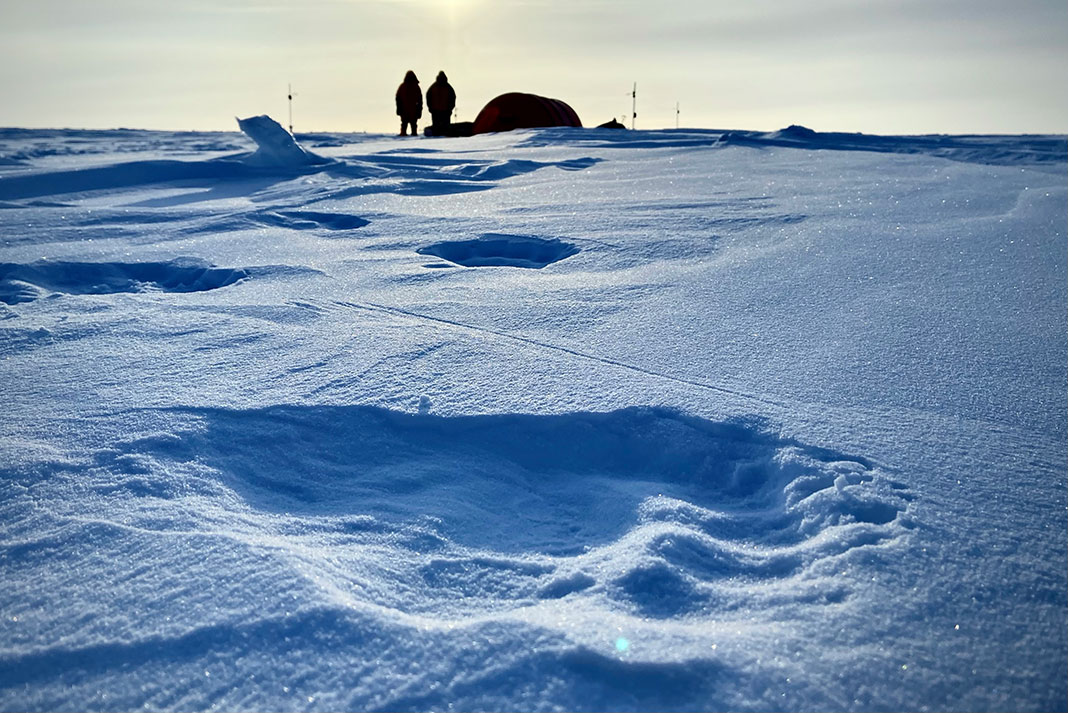
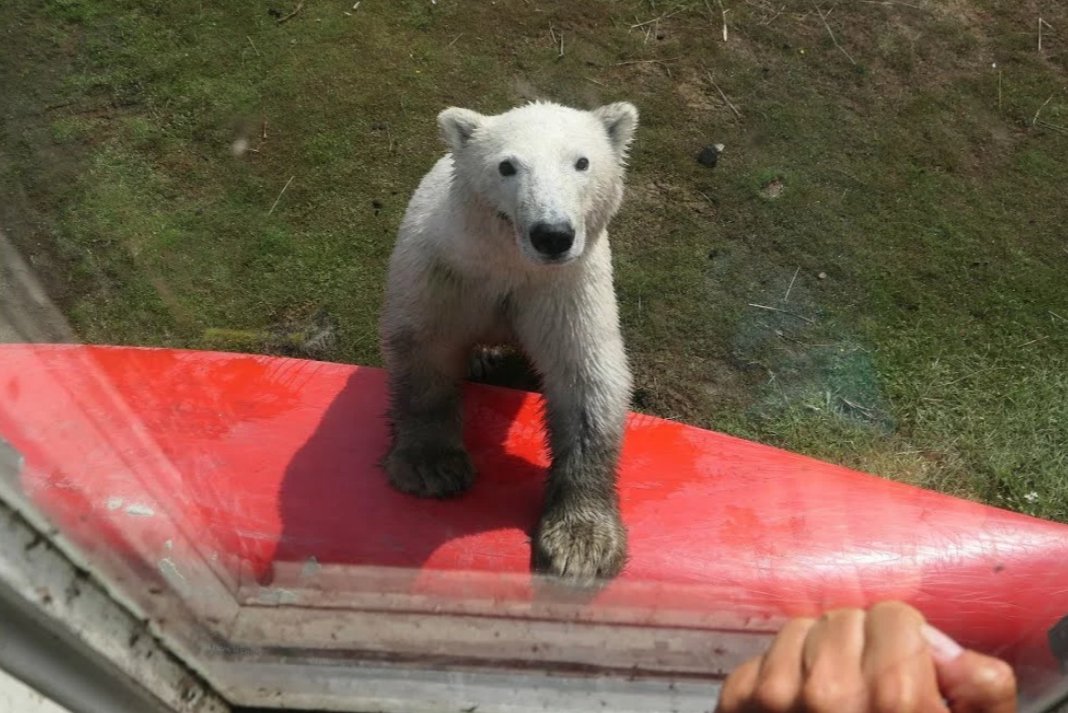
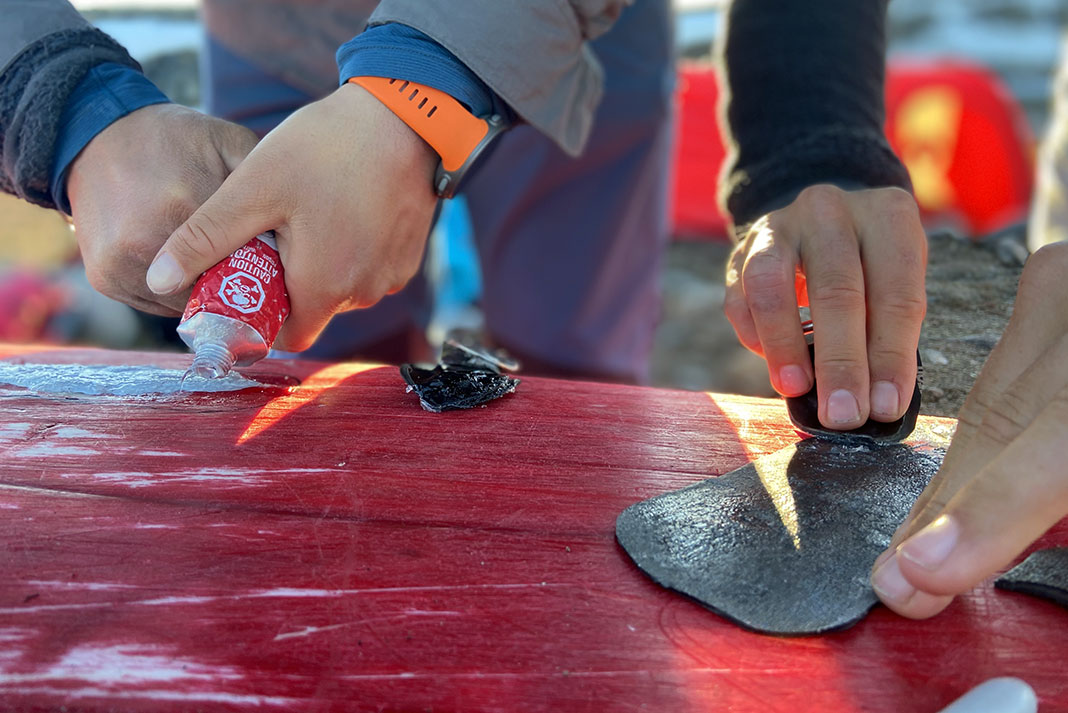
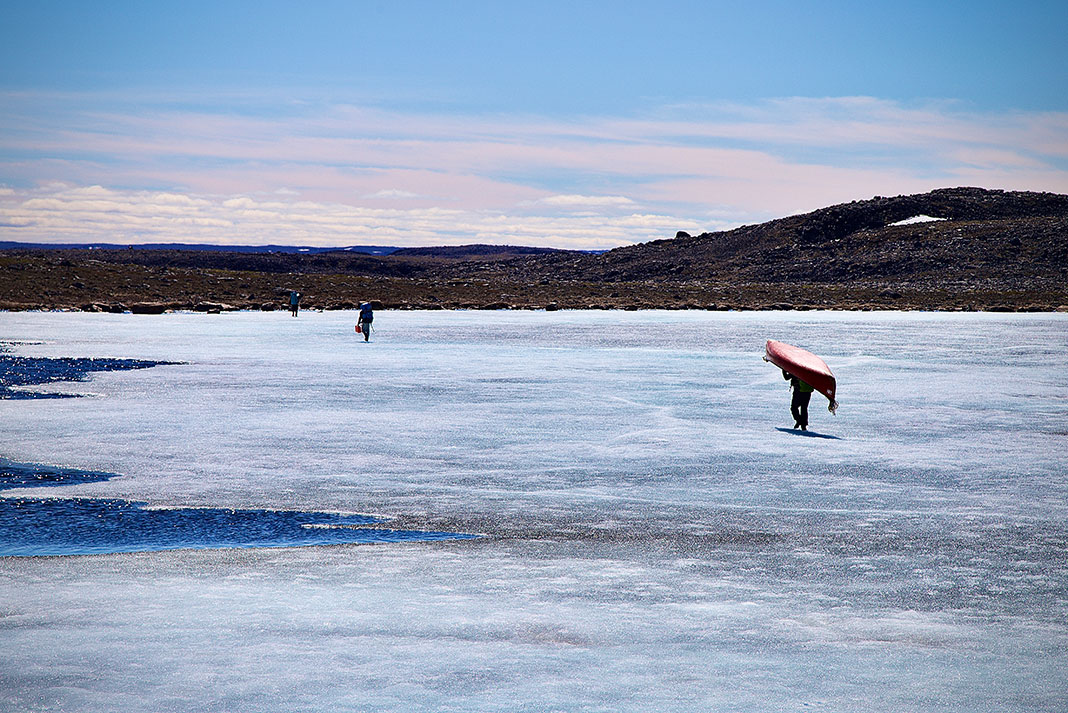
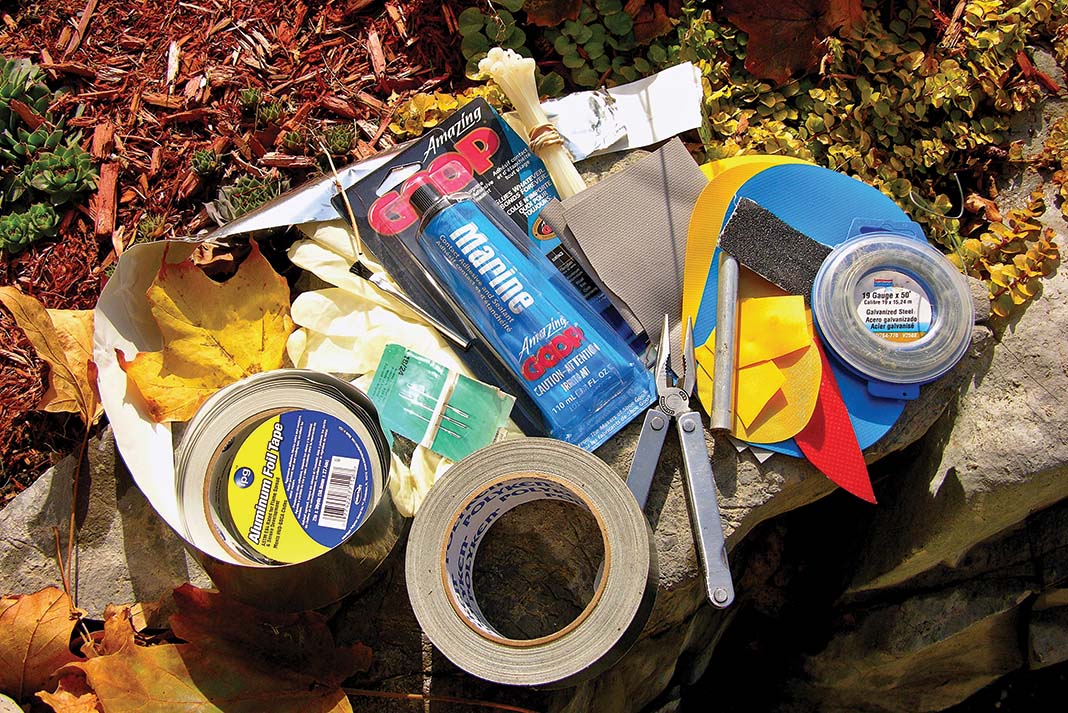
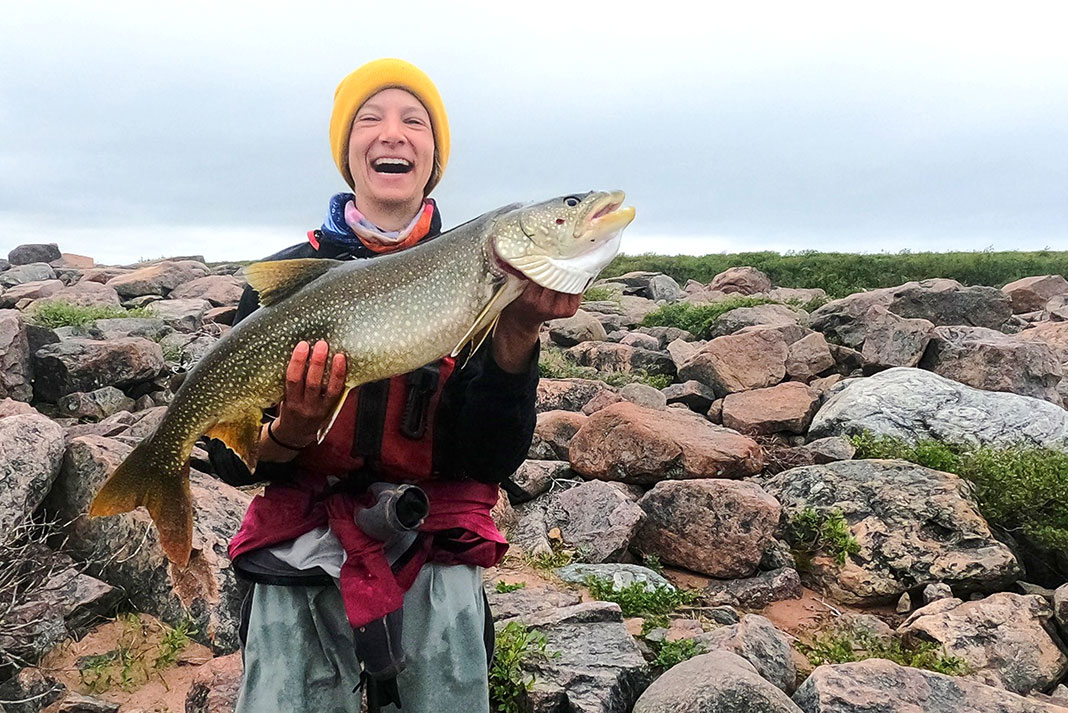
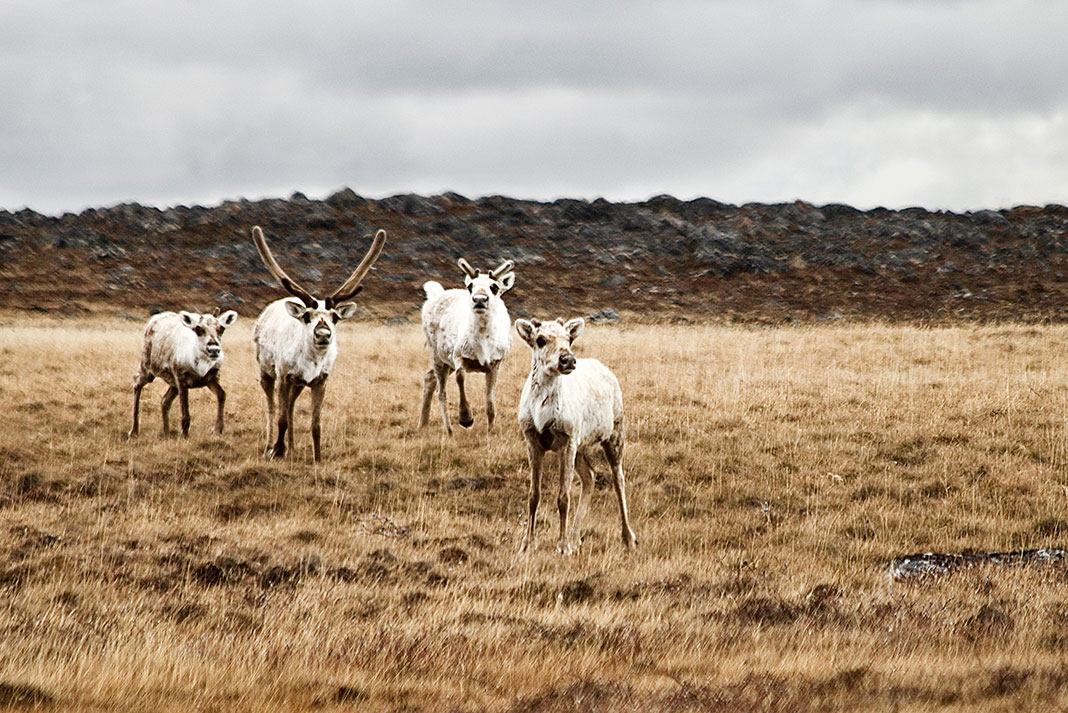
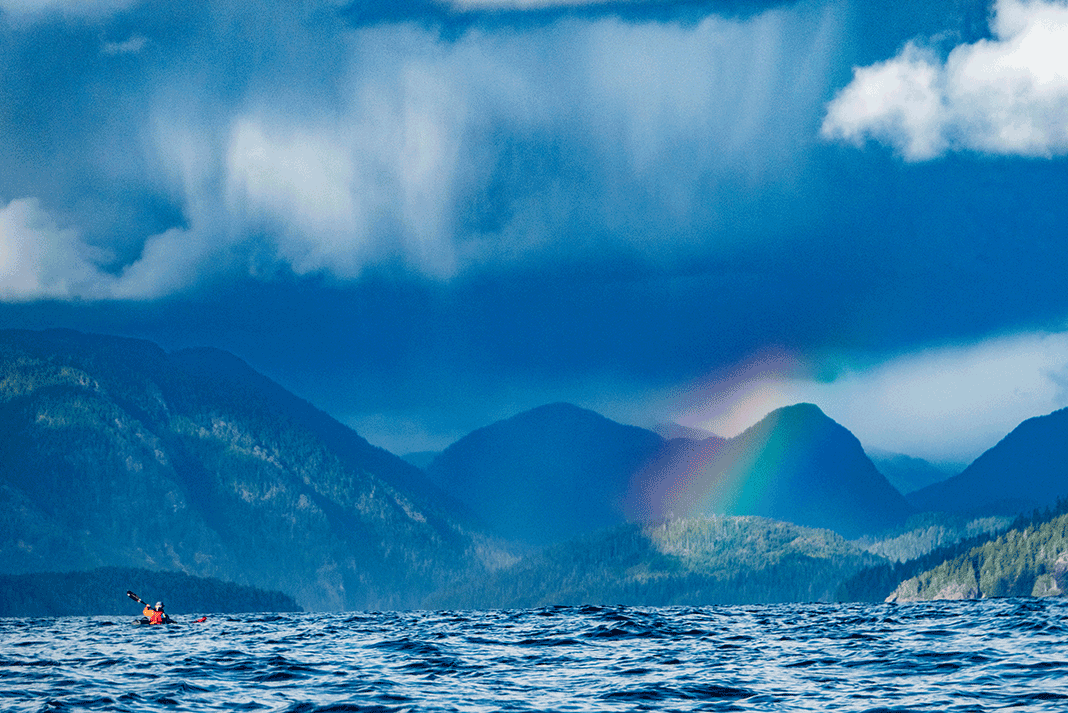
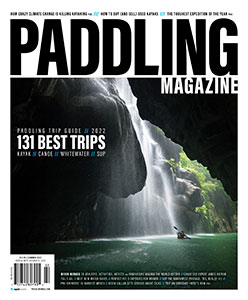 This article was first published in the Summer 2022 issue of Paddling Magazine.
This article was first published in the Summer 2022 issue of Paddling Magazine. 

